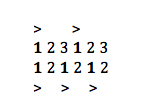Learn to Count (and Play!) Cross-Rhythms

Cross-rhythms—the simultaneous sounding of two different rhythmic grouping—are a predominant feature of much instrumental music since the mid-nineteenth century. In the guitar repertoire, you’re bound to find cross-rhythms in contemporary and modern pieces; perhaps the most famous example is the third movement of Britten’s Nocturnal, which features 2-against-3 and 3-against-4 patterns pretty much throughout. The music of guitarist-composer Dusan Bogdanovic is also full of polyrhythmic/polymetric inventions, especially in those pieces that draw inspiration from popular musics around the world.
Even though each cross-rhythm has a specific “sound” that can be learned and reproduced as necessary, I find it best to use a method to figure out the exact rhythmic relationship between the two parts, so that any figuration, no matter how complicated, can be learned and performed most accurately. Fortunately this method is very simple and extremely flexible, so let’s cut to the chase and actually figure out how it works.
The idea for figuring out any given cross-rhythm is to forget about the relative rhythmic value of the notes (i.e. the duration in relation to the meter/tempo), and just approach the two groupings in absolute terms. How does the two patterns actually fit together? Let’s start with a simple cross-rhythm like 2-against-3.
In order to figure out the exact rhythmic placement of each note, let’s start by finding the least common multiple (LCM) of the two rhythmic values—namely 2 and 3. Basic arithmetic tells us that the LCM of 2 and 3 is 6.
Let’s write out two series of six equal “subdivisions” (forget about their actual value in terms of eighth-note or sixteenth—it doesn’t matter at this stage)
1 2 3 4 5 6
1 2 3 4 5 6
Now let’s group each series according to the rhythmic values we’re trying to fit together; basically we want one series to have two beats, and the other three.
1 2 3 1 2 3 (two beats)
1 2 1 2 1 2 (three beats)
Now let’s focus on where each beat happens (the 1’s in the example)

If you read “across” the two series and only play the accented beats, you’ll have the exact cross-rhythmic pattern you were setting out to discover in the first place. Just tap the 1s and count the other subdivisions to keep a steady time. As you get more comfortable, just tap the accented beats and think of the subdivisions. As you bring the entire group up to the speed of your original context, you’ll have your accurately spaced out cross-rhythm.
Let’s try 4-against-3. The LCM is 12. Let’s write out the two series as three-groups-of-four and three-groups-of-three.

If you play just the accented beats you’ll hear a 4-against-3 cross-rhythm.
Of course, things get a bit more complicated as the numbers get bigger. Here’s 5-against-4 (LCM=20).

In order to translate the more complicated cross-rhythms to the musical context, you have to reintroduce the correct subdivision pulse into the mix. The faster (higher number) subdivision is the one you’re after—in this latter case, place your accents across a steady count of five (if you “zoom out” the pattern so that it encompasses just a single beat level, the actual subdivision is a 20-tuplet).
When playing the accented patterns, it helps to keep two hands separate and make two different sounds—maybe by rapping the desk with the knuckles of your left hand, and (gently) beating your chest with your open right hand.
I hope you will find this method to decipher cross-rhythms useful. With a bit of practice, you’ll be able to unlock even the most complicated patterns—and the beauty of this method is that it’s “scalable” to whatever level of complexity you need.

Alex
Wow! Ever since first heairng of the concept of polyrhythms I have never quite understood it. You explained this very well and have actually made it applicable for me! Thank you!
Rob
Woah! I’ve never seen it this way before!
Really awesome way of explaining the maths behind polyrhythms!